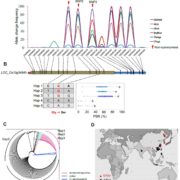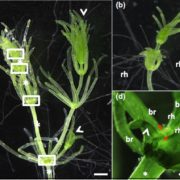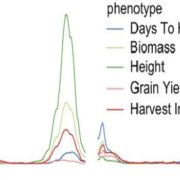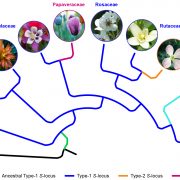Evolutionary origins of pseudogenes and association with regulatory sequences (Plant Cell)
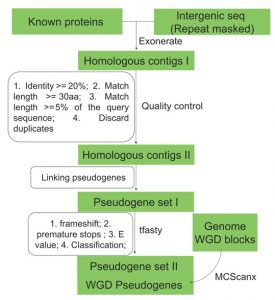 Protein-coding genes have undergone frameshifts, in-frame stop codons, and truncation to produce pseudogenes (Ψs), which had been thought to be non-functional. Recently, Ψs have been shown to play regulatory roles in gene expression by acting as a source of small interfering RNAs or sequestering microRNAs. Understanding the evolution and the molecular functions of Ψs will help to dissect the novel modules underlying Ψ-mediated regulatory network. In this context, Xie et al. have analyzed the origins of Ψs and their association with regulatory sequences in seven plant species, (Arabidopsis thaliana, Brachypodium distachyon, Glycine max, Medicago truncatula, Oryza sativa, Populus trichocarpa and Sorghum bicolor). The study found that Ψs are highly lineage-specific and have a high turnover rate, and their selective enrichment in the centromeric regions suggested the occurrence of Ψ elimination through genomic recombination. The active cis-regulatory elements in the promoter regions were found to produce a significant fraction of nonTE lncRNAs and nonTE miRNAs, thus opening an avenue for further studies to delineate the functions of these noncoding RNAs and the control of their expression. (Summary by Muthamilarasan Mehanathan) Plant Cell 10.1105/tpc.18.00601
Protein-coding genes have undergone frameshifts, in-frame stop codons, and truncation to produce pseudogenes (Ψs), which had been thought to be non-functional. Recently, Ψs have been shown to play regulatory roles in gene expression by acting as a source of small interfering RNAs or sequestering microRNAs. Understanding the evolution and the molecular functions of Ψs will help to dissect the novel modules underlying Ψ-mediated regulatory network. In this context, Xie et al. have analyzed the origins of Ψs and their association with regulatory sequences in seven plant species, (Arabidopsis thaliana, Brachypodium distachyon, Glycine max, Medicago truncatula, Oryza sativa, Populus trichocarpa and Sorghum bicolor). The study found that Ψs are highly lineage-specific and have a high turnover rate, and their selective enrichment in the centromeric regions suggested the occurrence of Ψ elimination through genomic recombination. The active cis-regulatory elements in the promoter regions were found to produce a significant fraction of nonTE lncRNAs and nonTE miRNAs, thus opening an avenue for further studies to delineate the functions of these noncoding RNAs and the control of their expression. (Summary by Muthamilarasan Mehanathan) Plant Cell 10.1105/tpc.18.00601


